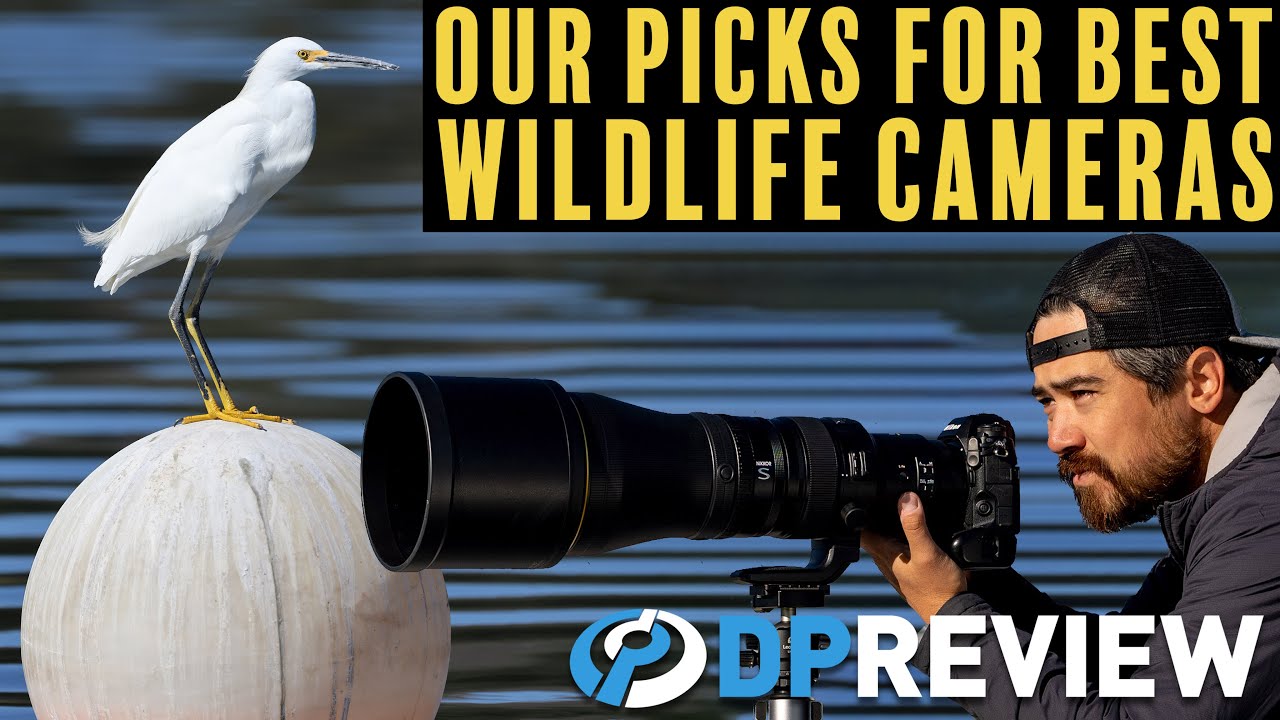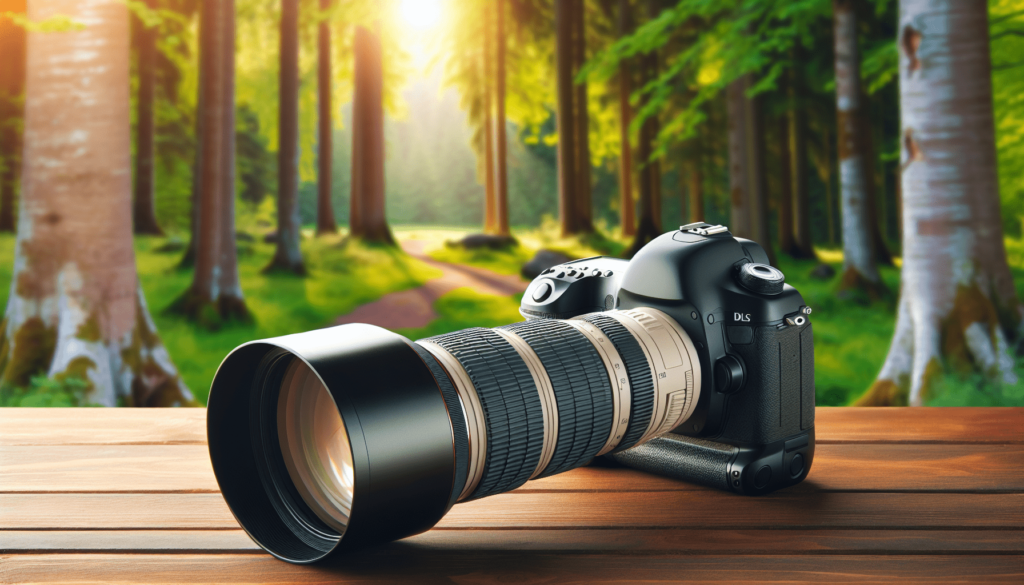Wildlife photography demands the perfect blend of skill and the right equipment to capture nature’s untamed beauty. Chris Niccolls from DPReview TV presents a comprehensive guide to the best cameras for wildlife photography, tailored for three distinct budget levels. Whether you have $1000, $3000, or an unlimited budget, this video covers the top picks designed to meet your needs.
The video highlights everything from the Nikon Coolpix P1000’s incredible zoom capabilities for beginners, to the advanced features of the Sony A1 for professionals. With insights on each camera’s strengths and weaknesses, Chris ensures that you have all the information needed to make an informed choice. Get ready to elevate your wildlife photography game, regardless of your budget!
Understanding Wildlife Photography Needs
Wildlife photography is a fascinating and challenging field that requires specialized equipment to capture those perfect moments in nature. To excel in this genre, it’s essential to understand the specific needs and challenges that come with it.
Challenges in Wildlife Photography
Wildlife photography can be incredibly rewarding but also daunting. One of the primary challenges is the unpredictability of wildlife. Animals don’t sit still and pose; they move quickly, often unpredictably, making it hard to get a well-composed shot. The use of long telephoto lenses, while necessary to capture animals from a distance, introduces its own set of challenges, such as increased camera shake and difficulty in tracking moving subjects. Additionally, lighting conditions can be less than ideal, with wildlife often most active during dawn and dusk when light levels are low.
Importance of Selecting the Right Camera
Choosing the right camera is crucial for overcoming these challenges. A camera with fast and accurate autofocus can mean the difference between a missed opportunity and a stunning shot. High burst rates are vital for capturing moments of quick action, while good low-light performance allows shooting in the early morning or late evening. The camera’s build quality also matters; a robust, weather-sealed body can endure the elements and tough shooting conditions typical in wildlife photography.
Key Features to Look for in Wildlife Cameras
When selecting a camera for wildlife photography, look for:
- High Burst Rate: Essential for capturing quick movements.
- Fast and Accurate Autofocus: Helps in tracking and focusing on fast-moving subjects.
- Image Stabilization: Reduces blur from camera shake, especially important with long lenses.
- Good Low-light Performance: Useful for shooting during dawn or dusk.
- Durability and Weather Sealing: Protects the camera in harsh environments.
- High-resolution Sensor: Allows for cropping into images without losing detail.
Budget Options for Cameras
Wildlife photography can be an expensive hobby, but there are good options available at various price points. Let’s categorize budget considerations into three main levels: under $1000, under $3000, and the “money-is-no-object” category.
Budget Categories: $1000, $3000, and Money-is-no-Object
- Under $1000: For entry-level enthusiasts or those on a tight budget. Cameras in this range will have some limitations but can still offer decent performance.
- Under $3000: Mid-range options for serious amateurs and semi-professionals looking for more advanced features and better performance.
- Money-is-no-Object: High-end, professional-grade cameras that offer the best performance and features available, with a price tag to match.
Factors to Consider Within Each Budget Level
Even within each budget level, there are various factors to consider:
- Lens Compatibility: Some cameras might have more affordable and versatile lens options than others.
- Additional Costs: Like extra batteries, memory cards, and potentially other accessories.
- Future-Proofing: Investing in a camera that will remain relevant and perform well for years to come, avoiding frequent upgrades.
- Handling and Ergonomics: The feel and usability of the camera, which can affect your shooting experience significantly.

This image is property of i.ytimg.com.
Best Cameras Under $1000
Let’s look at the best options under $1000, tailored for wildlife photography.
Nikon Coolpix P1000
The Nikon Coolpix P1000 is a remarkable camera within this price range due to its incredible zoom capabilities. Its integrated 24-3000mm lens means you won’t need to invest in additional telephoto lenses. This 16MP sensor camera is perfect for amateur wildlife photographers. However, be aware of its downsides: stability issues can arise due to the extended zoom, the small sensor size limits low-light performance, and overall, it’s not the best in dim conditions.
Canon EOS R10
The Canon EOS R10 is an entry-level APS-C camera that offers impressive capabilities. Notable features include a 15 FPS mechanical shutter, which is great for capturing fast action, and a good autofocus system with animal detection. The major downside is the limited affordable telephoto lenses for the RF mount, meaning you might need to invest significantly more for suitable lens options.
Panasonic G9
The Panasonic G9 is a well-rounded camera featuring a Micro Four Thirds, 20MP sensor. It boasts excellent body design, customizable controls, and weather-sealing, making it a durable option for fieldwork. Although it has a slower burst rate of 9 FPS and isn’t the best in low light, its wide range of affordable compact telephoto lenses makes it a winner in this budget category.
Best Cameras Under $3000
For a more serious investment, options in the under $3000 range offer significant improvements in performance and versatility.
Sony A7 IV
The Sony A7 IV features a 33MP full-frame sensor with in-body image stabilization and updated, user-friendly menus. The downside is a 10 FPS burst rate only achievable with lossy compressed RAW files. Despite this, its excellent image quality and versatile lens options make it a strong contender.
OM System OM-1
The OM System OM-1 sports a Micro Four Thirds sensor with very fast burst rates, making it excellent for action shots. Its rugged body and built-in image stabilization are great for field use. The trade-off is lesser image quality compared to full-frame options in this price category.
Fujifilm X-H2S
The Fujifilm X-H2S combines the benefits of an APS-C stacked chip with a 26MP sensor. It supports up to 15 FPS with a mechanical shutter and up to 40 FPS with an electronic shutter. The main drawback is the limited availability of super telephoto lenses, but its autofocus and handling make it a solid choice.
Canon EOS R6 Mark II
The Canon EOS R6 Mark II has a 24MP full-frame sensor and supports up to 40 FPS with its electronic shutter, alongside excellent autofocus capabilities. It’s compatible with both older EF lenses and new RF telephotos, offering a broader range of lens options, which can be a significant advantage.

Conclusion
Summary of Top Cameras Across Different Budgets
Whether you’re just starting out or are a seasoned professional, there are excellent camera options available at various budget levels. For those under $1000, the Nikon Coolpix P1000, Canon EOS R10, and Panasonic G9 stand out for their unique strengths and value for money. Stepping up to the under $3000 category, models like the Sony A7 IV, OM System OM-1, Fujifilm X-H2S, and Canon EOS R6 Mark II offer advanced features, better image quality, and greater versatility.
Final Recommendations
For beginners, the Panasonic G9 offers the best combination of features and affordability, thanks to its excellent design and range of lenses. For mid-budget options, the Sony A7 IV stands out for its image quality and lens versatility, despite its slightly slower burst rate. Ultimately, the right choice will depend on your specific needs and preferences, such as your existing lens collection and how specialized your wildlife photography needs are.
Encouragement to Watch Video Reviews and Subscribe for More Content
It’s always a good idea to watch video reviews and hands-on experiences to get a better sense of a camera’s real-world performance. We encourage you to check out detailed reviews and comparisons on platforms like DPReview TV. Don’t forget to subscribe for more feature videos, reviews, and interviews to stay updated with the latest in camera technology. Happy shooting!

